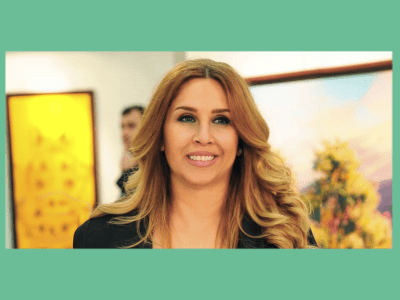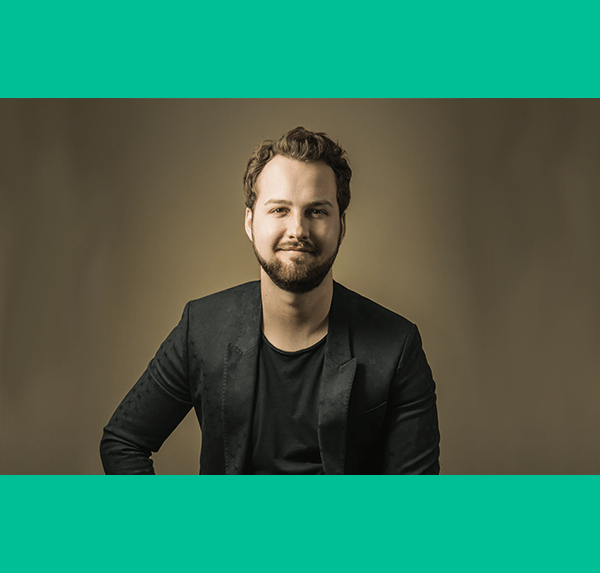Vicky Evangeliou is EU Business School alumni who graduated in 1995 with an MBA. She returned to present to current students and alumni on the subject of inclusion in business. Vicky started her career 20 years ago at Johnson & Johnson, where she spent nine years rising from an entry-level position to a high-status job.
Vicky left when she felt it was time to begin her own marketing company, and she would later count Johnson & Johnson among her many multinational clients alongside other household names such as Pfizer and L’oreal. Over the last three years Vicky has founded VSN Hub, which aims to bring ancient Greek culture and philosophy to the modern context of Greek business and tourism.
Company Culture
Vicky praised Johnson & Johnson for its positive company culture, which has been recognized internationally as a leading example. Part of her work at Johnson & Johnson was to contribute to the company’s code of business conduct. Vicky emphasized the importance of this document, which was able to bring employees of diverse backgrounds and values together in agreement regarding best practice.
Although the workforce consisted of people from many cultures, it was important for the business to create its own company culture so everyone could share expectations and understandings regarding the Johnson & Johnson work environment.
It is not just large multinationals that need this kind of credo, according to Vicky. All businesses should make a conscious effort to envision and develop a company culture that serves their needs and keeps their employees happy at work. This is intrinsic to the success of a business.
Elements of Inclusion
Most people will have heard of companies which have gender-specific programs designed to promote greater levels of female leadership. However, diversity and inclusion go beyond that. Vicky shared her experience of developing initiatives for the LGBT community, people from minority ethnic backgrounds, people with disabilities and as well as senior employees.
Efforts were not focused solely at the recruitment stage either. Vicky explained that, once recruited, employees of underrepresented groups should be empowered by businesses to fully participate. They should also be given access to opportunities for future career development.
Levels of Participation
Vicky reminded students that people can participate in different ways. Companies should strive to make all options available to their employees. They may choose to share their knowledge, explore new fields, pursue further learning, create their own projects, or join in with the projects of others. What is important, stressed Vicky, is that employees are facilitated, supported and encouraged to participate as much as possible.
This is not only positive for the individuals themselves, but it also has positive outcomes for the company as a whole. In fact, this is the best way for businesses to extract the full potential from their employees.
A Framework for Inclusion
Vicky suggested the following practical measures for pursuing inclusion at work:
- Be tech savvy: Use communication technology to make information accessible.
- Communicate: Share policies and practices in both internal and external communications.
- Ensure productivity: Make accommodations to meet individual needs and support participation.
- Hire and keep the best: Design recruitment processes that give candidates opportunities to demonstrate their abilities. Investigate best methods of retention so they stay long-term.
- Build the pipeline: Make connections with different communities through outreach programs.
- Lead the way: Try to be a pioneer when it comes to an inclusive business culture.
- Measure success: Be accountable and identify areas for ongoing improvement.
Diversity and Inclusion Strategy
Vicky shared a four-pronged approach to diversity and inclusion.
- Build culture and capability. This is achieved through education and communication as well as leadership commitment and accountability. Companies also need to develop supportive infrastructure; for example, councils that represent different community needs.
- Enhance brand. It’s important that the general public is aware of company commitment to diversity and inclusion. This can be shown through support of community issues and volunteerism. There are also national and state bodies which recognize diverse and inclusive workplaces.
- Grow the business. Look for opportunities to embrace the values of diversity and inclusion in all areas of the business. One method may be to seek diverse suppliers or build community relations. There is a need to develop cross-department cultural competence so that these values are not merely reflected in human resources.
- Develop talent. Provide diverse pipelines to facilitate access for new talent of different backgrounds. Offer career development opportunities to encourage staff members to stay and grow alongside your business.
The Risk of Burnout
Vicky shared a quote from philosopher Aristotle which stated “happiness is the meaning and the purpose of life; the whole aim and end of human existence.” While acknowledging that many companies are yet to catch up, she said that conventional ideas of leadership that push people to their limits are no longer seen as successful or sustainable.
Burnout should no longer be regarded as a promising sign of commitment to hard work. Instead, the dangers of burnout must be acknowledged. Vicky feels that people work more productively when they are happy and fulfilled. Businesses have a responsibility to develop a workplace culture that fosters positivity and a healthy work-life balance.
Outcomes of Inclusion
One of the benefits of inclusion that Vicky mentioned was the fact that innovation is made possible when diverse perspectives are at the table. Inclusion can give companies a competitive edge, resulting in better results.
In our modern times, there are also risks when companies choose to ignore inclusion. If they are seen as inaccessible, ignorant or hostile to specific communities, employees now have the opportunity to expose this through online platforms like Glassdoor.
It’s in everyone’s interest to make companies more welcoming to all. A positive workplace culture is more likely to attract and retain top talent.
A Human-centric Approach
Vicky’s overall message focused on the importance of a human-centric approach to business. Ultimately, a company is a community. That means people need to be included in decision-making. This is also the most effective way to ensure widespread buy in.
Although policies must be enforced from the top, it is indeed possible to develop these policies together in a participatory way. It is crucial that commitment is secured at all levels for inclusion strategies to succeed.










